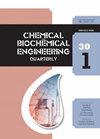柔性基板上高导电性喷墨印刷银纳米油墨的化学和热联合烧结
IF 0.9
4区 生物学
Q4 BIOTECHNOLOGY & APPLIED MICROBIOLOGY
引用次数: 8
摘要
导电性是衡量印刷电子产品性能的关键因素,但喷墨印刷银纳米油墨的导电性在很大程度上取决于制造后的烧结。本文合成了两种不同的导电银纳米油墨,其中银纳米颗粒被两种不同的封盖剂——聚丙烯酸(PAA)和聚甲基丙烯酸(PMA)稳定。油墨被喷墨印刷在柔性PET基板上,并涂上一层额外的聚阳离子层,这有利于化学烧结。然后将打印的特征暴露在适度升高的温度下,以评估化学和热联合烧结的效果。bothink在室温下产生导电特性,导电性能随烧结温度和时间的增加而增加。在高于100℃的温度下,封盖剂的选择对电导率没有明显影响,在所有情况下,电导率都接近50%的非常高的值。在120°C烧结180分钟后,获得了最低的电阻率(2.24 μΩ cm)。通过化学和传统的热烧结相结合,我们在柔性衬底上生产了导电性很强的银电极,同时使用低成本和简单的工艺。本文章由计算机程序翻译,如有差异,请以英文原文为准。
Combined Chemical and Thermal Sintering for High Conductivity Inkjet-printed Silver Nanoink on Flexible Substrates
Electrical conductivity is a key factor in measuring performance of printed electronics,
but the conductivity of inkjet-printed silver nanoinks greatly depends on post-fabrication
sintering. In this work, two different conductive silver nanoinks, in which the silver nanoparticles were stabilized by two different capping agents – Poly(acrylic acid) (PAA) and Poly(methacrylic acid) (PMA) – were synthesized. The inks were inkjet-printed on flexible PET substrates, coated with an additional polycation layer, which facilitated
chemical sintering. The printed features were then exposed to moderately elevated
temperatures to evaluate the effect of combined chemical and thermal sintering. Both
inks produced conductive features at room temperature, and the conductivity increased
with both temperature and duration of sintering. At temperatures above 100 °C, the choice of capping agent had no pronounced effect on conductivity, which approached very high values of 50 % of bulk silver in all cases. The lowest resistivity (2.24 μΩ cm) was obtained after sintering at 120 °C for 180 min. By combining chemical and conventional thermal sintering, we have produced remarkably conductive silver electrodes on flexible substrates, while using low-cost and simple processes.
求助全文
通过发布文献求助,成功后即可免费获取论文全文。
去求助
来源期刊
CiteScore
2.70
自引率
6.70%
发文量
23
审稿时长
>12 weeks
期刊介绍:
The journal provides an international forum for presentation of original papers, reviews and discussions on the latest developments in chemical and biochemical engineering. The scope of the journal is wide and no limitation except relevance to chemical and biochemical engineering is required.
The criteria for the acceptance of papers are originality, quality of work and clarity of style. All papers are subject to reviewing by at least two international experts (blind peer review).
The language of the journal is English. Final versions of the manuscripts are subject to metric (SI units and IUPAC recommendations) and English language reviewing.
Editor and Editorial board make the final decision about acceptance of a manuscript.
Page charges are excluded.

 求助内容:
求助内容: 应助结果提醒方式:
应助结果提醒方式:


